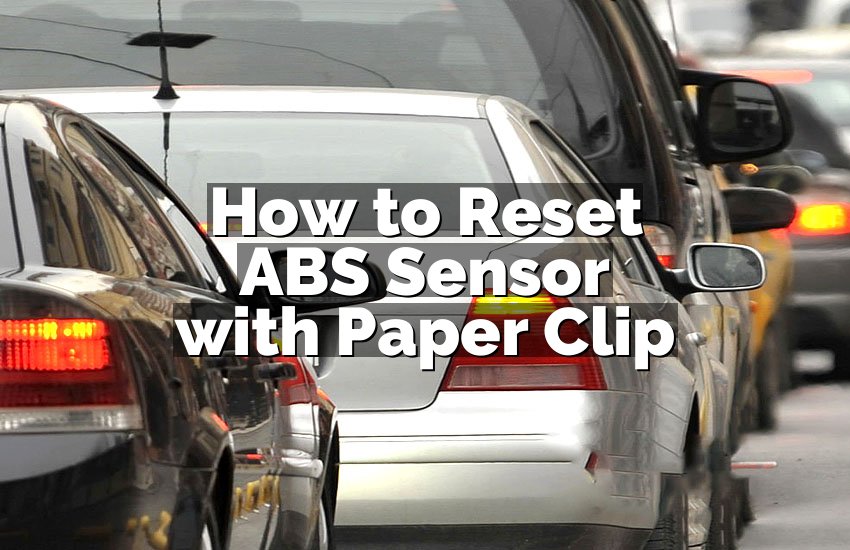To fix tail lights staying on when the car is off, you can try checking the brake light switch and adjusting or replacing it if necessary.

Credit: m.youtube.com
Common Causes Of Tail Lights Staying On
When you find that your car’s tail lights are staying on even when the car is turned off, it can be a frustrating and potentially dangerous issue. There are a few common causes of this problem that you can investigate to help diagnose and fix the issue.
Faulty Brake Light Switch
A faulty brake light switch is one of the primary culprits behind tail lights staying on when the car is off. The brake light switch is responsible for signaling the brake lights to turn on when the brake pedal is pressed and off when it’s released. If the switch becomes stuck or malfunctions, it can cause the tail lights to stay illuminated even when the car is not in use.
Issues With Wiring Or Circuit
Another common cause of tail lights staying on is issues with the wiring or circuit. Faulty wiring, a short circuit, or a damaged relay can all lead to the tail lights remaining lit. These electrical issues can often be more challenging to diagnose and may require careful inspection of the car’s electrical system.

Credit: fr-fr.facebook.com
Tools Needed For Troubleshooting
To fix tail lights staying on when the car is off, you’ll need a few essential tools. Start with a multimeter to test the electrical connections, followed by a wiring diagram specific to your vehicle and a pair of pliers to secure any loose connections.
Finally, have replacement bulbs on hand in case the issue lies there.
Multimeter
A multimeter is an essential tool for troubleshooting tail lights that stay on when the car is off. This versatile device allows you to measure voltage, current, and resistance, helping you diagnose electrical issues with your tail lights. With its ability to test electrical continuity and identify faulty connections, a multimeter is a must-have tool for any DIY automotive electrical troubleshooting.
Screwdriver
A screwdriver is another tool you’ll need to troubleshoot and fix tail lights that won’t turn off. It allows you to remove the fasteners and covers necessary to access the tail light fixtures. By using a screwdriver, you can detach the tail light housing and examine the wiring connections and bulbs. Additionally, a screwdriver helps you replace faulty bulbs and secure the fixtures back in place, ensuring proper functionality of the tail lights.
Electrical Tape
Among the common tools needed for troubleshooting tail lights staying on when the car is off, electrical tape plays a crucial role. This tape is used to insulate and secure electrical connections, preventing short circuits and intermittent electrical issues. By covering exposed wires or damaged insulation with electrical tape, you can protect the electrical system and ensure a reliable connection.
Having these tools ready will streamline the troubleshooting process and help you identify and fix the issues causing your tail lights to stay on even when the car is off. Let’s dive into the step-by-step guide.
Steps To Diagnose The Problem
Are your tail lights staying on even when the car is off? This can be an annoying issue, as it not only drains the battery but also poses a safety concern. Thankfully, diagnosing and fixing the problem is not as daunting as it may seem. By following a few simple steps, you can get to the root of the issue and resolve it quickly. Let’s take a closer look at the steps you can take to diagnose the problem and get your tail lights back to normal.
Check Brake Pedal Position
The first step in diagnosing why your tail lights stay on when the car is off is to check the position of the brake pedal.
- Ensure that the brake pedal is fully released and not partially engaged. Sometimes, the brake light switch can become stuck, causing the lights to stay on.
- Press the brake pedal down with your hand and see if the lights go off. If they do, it indicates that the brake pedal switch needs adjustment or replacement. Refer to your car’s manual or consult a professional to address this issue.
Inspect Fuse Box For Blown Fuse
If the brake pedal position is not the cause of the issue, the next step is to inspect the fuse box for a blown fuse. Follow these steps:
- Locate the fuse box in your car. It is usually located under the dashboard or in the engine compartment.
- Open the fuse box carefully and identify the fuse responsible for the tail lights. Refer to your car’s manual or check the fuse box cover for a diagram.
- Inspect the fuse for any signs of damage, such as a broken filament or discoloration. If you find a blown fuse, replace it with a new one of the same amperage.
- After replacing the fuse, turn on the car and test if the tail lights stay on. If they do, move on to the next step.
Examine Wiring For Damage
If neither the brake pedal position nor a blown fuse is the culprit, it’s time to examine the wiring for any damage. Follow these steps:
- Visually inspect the wiring connected to the tail lights. Look for any frayed, loose, or corroded wires. Pay close attention to the point where the wiring harness connects to the lights.
- If you notice any damage, consider repairing or replacing the wiring. This may require the expertise of an automotive electrician or a professional mechanic.
- Once the wiring is repaired, test the tail lights to see if they stay on when the car is off. If the problem persists, it’s advisable to seek professional help to further investigate and resolve the issue.
By following these steps, you can efficiently diagnose why your tail lights stay on when the car is off. Whether it’s a simple adjustment of the brake pedal position, a blown fuse replacement, or a more complex wiring repair, identifying the problem is the first step towards getting your tail lights functioning correctly again.
Repairing The Tail Lights
If your car’s tail lights are staying on even when the car is off, this could indicate a problem with the wiring or the switch. First, check the switch on the brake pedal to make sure it’s functioning properly. If the switch is not the issue, you may need to inspect the wiring and connections for any faults and repair as needed to fix the tail lights staying on.
Repairing the Tail LightsIf your tail lights remain on even when the car is turned off, it can be frustrating and hazardous. Repairs can be straightforward and are crucial for the safety of both yourself and other road users. Here are ways to fix tail lights staying on when the car is off.Replacing Brake Light SwitchOne common cause of tail lights staying on when the car is off is a faulty brake light switch. This switch is located near the brake pedal and controls the activation of the tail lights when the brakes are applied. To replace the brake light switch:1. Locate the brake light switch under the dashboard near the brake pedal. 2. Use a Phillips head screwdriver to remove the mounting screws. 3. Disconnect the electrical connector from the old switch and remove it. 4. Install the new switch and reconnect the electrical connector. 5. Secure the new switch in place with the mounting screws.Fixing Wiring ConnectionsAnother potential issue causing the tail lights to stay on is faulty wiring connections. Ensure that the wiring connections are secure and free of corrosion or damage. Follow these steps to fix wiring connections:1. Inspect the wiring connections at the tail lights and the brake light switch for any signs of damage. 2. Clean any corroded connections using a wire brush to ensure a good electrical connection. 3. Secure any loose connections and ensure the wiring harness is properly fastened in place.By addressing these potential issues, you can successfully repair tail lights that stay on when the car is off. Always prioritize safety and ensure that your tail lights are functioning properly before hitting the road.Preventive Maintenance Tips
To fix tail lights staying on after the car is off, first check the brake pedal switch. If that’s not the issue, examine the wiring and connections for any faults. Next, replace the faulty relay if needed to ensure proper functioning and prevent future problems.
Regularly Inspect Tail Light Functionality
Check tail lights routinely for functionality to prevent issues.
Keep Wiring Protected From Weather Elements
Protect wiring from rain and snow to avoid moisture damage.
When To Seek Professional Help
If your tail lights remain on after switching off your car, it’s crucial to seek professional assistance promptly. The issue might stem from electrical malfunctions that need specialized expertise to diagnose and correct, ensuring safety and preventing further problems on the road.
Persistent Electrical Issues
If tail lights stay on after the car is off, and you’ve attempted basic fixes, persistent electrical problems may be the culprit.
- Check wiring connections and fuse box for damage.
- Confirm switches are functioning properly.
- Seek assistance if issues persist despite efforts.
Limited Automotive Repair Knowledge
For those with limited repair expertise, seeking professional help ensures proper diagnosis and repair.
- A certified mechanic can address complex electronic faults.
- Professional diagnosis avoids making costly mistakes.
- Leaving electrical repairs to experts can prevent further damage.
Cost Consideration For Repairs
Cost consideration for repairs plays a significant role in the decision-making process when addressing issues with tail lights staying on when the car is off. Understanding the potential costs associated with DIY versus professional repairs and affordable replacement parts can help car owners make informed choices.
Diy Vs. Professional Repair Costs
When experiencing tail lights staying on when the car is off, car owners often face the decision of whether to attempt a DIY repair or seek professional assistance. The DIY approach might seem cost-effective at first, but it’s essential to consider the potential risks and further damage that could result from improper repairs. On the other hand, professional repair costs could vary depending on the specific issue and the expertise of the mechanic. While professional repairs might incur higher initial expenses, they often come with guarantees and ensure the problem is correctly rectified.
Affordable Replacement Parts
Another aspect to consider when evaluating the cost of repairing tail lights is the availability of affordable replacement parts. Utilizing high-quality yet budget-friendly replacement parts can significantly impact the overall repair expenses. It’s essential to research and compare prices from various suppliers to identify the most cost-effective options without compromising on quality.

Credit: www.facebook.com
Ensuring Safety After Repair
A crucial step in fixing tail lights that stay on when the car is off is to ensure safety after the repair. Even after successfully troubleshooting and resolving the issue, it is essential to thoroughly test the functionality of the tail lights and monitor their performance post-repair. By following these simple steps, you can ensure that your tail lights are working correctly and that you are driving safely.
Testing Tail Lights Before Driving
Before hitting the road, it is crucial to conduct a comprehensive test of the tail lights to guarantee their proper functioning. Follow these steps to check if the repair has been successful:
- Inspect the tail lights: Visually examine the tail lights to ensure that they are not broken, loose, or damaged in any way.
- Activate the lights: Turn on the headlights, and then switch on the tail lights. Verify that all the bulbs illuminate correctly and there are no flickering or dim lights.
- Check the brake lights: Press the brake pedal and observe if the brake lights illuminate instantly and brightly. Repeat this step multiple times to ensure consistency.
- Test the turn signals: Activate both the left and right turn signals individually, and verify that they are working correctly by checking for proper blinking and synchronization.
- Inspect the reverse lights: Put the car in reverse gear while simultaneously turning on the headlights. Ensure that the reverse lights turn on promptly and shine brightly.
Monitoring Functionality Post-repair
After conducting the initial test, it is crucial to keep an eye on the functionality of the tail lights in the days following the repair. Use the following tips to monitor their performance:
- Regular visual inspection: Every time you approach your vehicle, take a quick look at the tail lights to ensure they are intact and functioning correctly.
- Observe for abnormal behavior: While driving, pay attention to any unusual behavior from the tail lights such as flickering, dimming, or inconsistencies in illumination.
- Ask for feedback: Request feedback from passengers or other drivers to confirm the proper functioning of your tail lights.
- Periodic checks: To ensure long-term safety, perform periodic checks on your tail lights at specific intervals, such as once a month.
Conclusion
Fixing tail lights staying on when the car is off is crucial for safety and legal compliance. By understanding the common causes and troubleshooting tips outlined in this post, you can efficiently address this issue. Remember to prioritize regular maintenance and professional assistance if needed to ensure your vehicle’s safety and functionality.


